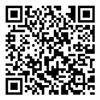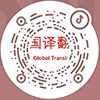Specific Solutions
How Did the First Translator in History Manage to Bridge the Language Gap Among Humans?
After the Great Flood, Noah's descendants spread across the earth, all speaking the same language and sharing the same accent, which allowed for seamless communication among them. They migrated eastward to Babylon and arrived at a vast plain. In order to promote their reputation, they planned to build a tower that would reach the heavens, but this move disturbed God. To thwart their plans, God caused them to speak different languages. As those building the tower could no longer communicate with each other, the construction of the Tower of Babel came to a halt. This is recorded in the Old Testament of the Bible, concerning the division of human languages.
For us living in the 21st century, cross-national and cross-cultural communication is no longer a daunting task. But how did the first translator in history manage this in ancient times?
The earliest recorded translation activities in China began during the Warring States period. The first translated literary work was a poem known as "The Song of the Yue People," recorded by Liu Xiang of the Western Han Dynasty in his collection "Shuoyuan: Good Words." Although the states of Chu and Yue were neighboring countries, their dialects differed, necessitating the assistance of translators for communication. "The Song of the Yue People" recounts a song sung by a Yue woman; it is the earliest translated poem in Chinese history and serves as an artistic source for the "Chu Ci."
In the West, the earliest documented translation activity dates back to 250 BC, when the Roman Livy Andronicus translated Homer's epic "The Odyssey" into Latin. At that time, Rome had conquered Greece and sought to transplant its brilliant culture through large-scale translations of Greek texts. In other words, without translation, the flourishing of ancient Greek culture in Rome—and later its dissemination worldwide—would not have been possible.
Perhaps God overlooked the fact that although languages differ, various peoples are not completely isolated. Whenever there is a need for communication, it inevitably promotes the development of translation. For ordinary daily expressions, our ancestors could understand each other through gestures and signs. Translators of that era assumed the crucial role of cultural intermediaries; they progressed from being language learners to compiling dictionaries and translating classic works, fostering exchanges between different civilizations.
Translation is fundamentally a process of gradual mutual understanding between two civilizations. However, this process is bound to be long and arduous because language is not mechanical; it embodies rich national sentiments. These words, imbued with human subjective consciousness, including thoughts, culture, and emotions, once formed a chasm between different ethnic groups, hindering mutual understanding among humans. Ancient translation pioneers had to live and learn across different nations or ethnicities for many years to slowly understand another country's cultural customs before they could better grasp its character and language. Immersion in the environment, it seems, is the best way to learn a language and master the art of translation.


















